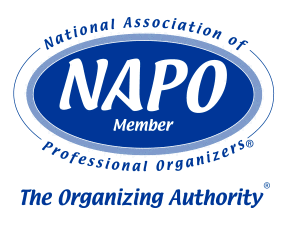 Smartphones have become a necessity in our lives these days. No matter where we look, people are texting, emailing, calling, dictating, taking photos, etc. So much so, that we sometimes lose connection with the people sitting right next to us.
Smartphones have become a necessity in our lives these days. No matter where we look, people are texting, emailing, calling, dictating, taking photos, etc. So much so, that we sometimes lose connection with the people sitting right next to us.
Since July is National Cell Phone Courtesy Month, I thought it was the perfect time to give some thought to:
- Who uses mobile devices?
- How do we use our mobile devices?
- How can we be more courteous when we do use our mobile devices?
From a 2016 Pew Research study:
% of U.S. adults who own cell phones:
| Any cellphone | Smartphone | Cellphone, but not smartphone | |
| Total | 95% | 77% | 18% |
| Men | 96% | 78% | 18% |
| Women | 94% | 75% | 19% |
How do we use our smartphones?
From a 2016 Statistic Brain survey of mobile device users:
| Percent who said their mobile phone is the first and last thing they look at each day | 29 % |
| Percent who said they need to have the latest mobile technology | 18 % |
| Percent who check their mobile device every 30 minutes or less | 37 % |
| Percent who said they could only go a few hours without their mobile phone | 34 % |
| Percent who said they prefer to communicate by text message | 32 % |
| Percent who have asked someone on a date via text | 20 % |
| Percent who say their mobile device make them better parents | 65 % |
| Percent who would take their mobile device to work over their lunch | 66 % |
Anyone else shocked by these number? I sure was.
Which leads me to, how can we be more courteous when using our mobile devices?
Put your device away.
I don’t know of anyone that appreciates having a meeting or meal with someone who chooses to leave their mobile device on the table. It sends a pretty clear message that the phone is as, or more, important than the person sitting right in front of us.
And remember, unless you are an emergency service provider, it’s probably okay to let a call go to voicemail or look at a text when you are not engaged with another person. (Caveat: I will sometimes keep my phone out if the person I’m meeting is late and may need to get in touch for directions; I may pull my phone out if someone has specifically asked to have something looked up, or a photo or contact shared; etc.)
Keep it quiet and calm.
Whenever possible, keep your phone on vibrate mode. If you need to take an emergency call, politely excuse yourself and take the call in a private area. Also, remember your voice and gestures travel. Even if you think you are out of sight or earshot, you probably aren’t.
Follow the law and “house” rules:
Many localities have very stringent and specific laws pertaining to using smart phones while operating a motor vehicle, even when stopped at a light or stop sign (Washington is enforcing much more strict laws starting on July 23rd). If you absolutely need to check your phone, find a safe place to pull over.
Some places (hospitals, airplanes, courtrooms, libraries, movie theatres, etc.) request no cell phone use as not to disturb others. Follow the rules for wherever you are, they are there for a reason.
Don’t use you cellphones as a social blocker:
I get it, sometimes we just don’t know what to do with ourselves. We’ve all been in new or awkward situations where we don’t’ want to feel “alone.” Picking up our cellphone allows us to “connect,” but not with the people we are surrounded by. Looking at our phones sends a clear message of “don’t bother me, I’m busy.” Put your phone down, take a deep breath and engage face-to-face with those around you.
Watch where you are going.
Twice yesterday I had people nearly walk into me in the grocery store. I came to a complete stop in order to avoid someone who was distracted by their phone from running into me. Imagine if those same people were on a busy sidewalk or crossing a busy street. “Don’t text and walk” is becoming as important as “Don’t drink and drive.”
Cell phones are part of our lives . . . let’s all use them responsibly. 🙂
Cindy Jobs


